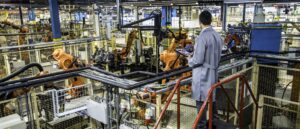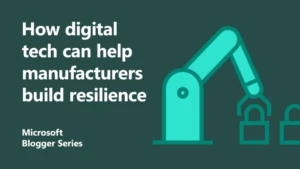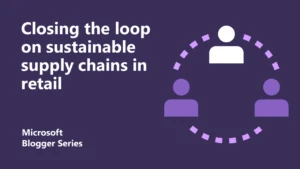
Cloud City and the Internet of Things
“Lobot’s not the chatty type, but he sure is loyal. And great with computers!”
―Lando Calrissian
In a recent blog post, I examined the current state of cloud computing through the lens of the classic science fiction series, Star Trek. In this post, I want to delve a bit deeper into the subject with another sci-fi classic: Star Wars. And, since this is a post about cloud computing, what better place to start than Bespin, aka the planet in The Empire Strikes Back that is home to Cloud City?
In case you needed a quick refresher, Cloud City is the place where Luke Skywalker finds out who his father is and where Han Solo ends up frozen in carbonite. But with so many pivotal plot moments happening there, it’s easy to overlook one of my favourite characters: Lobot, the bald fellow with the funny-looking headphones.
Lobot: Mr. Internet of Things
Although Cloud City is known to most fans of the film as a floating luxury resort, its primary function is as a mining outpost for tibanna gas (which used to power blasters and cool hyperdrive engines, in case you were wondering), and is home to nearly 6 million inhabitants. While it’s technically run by the dashing, but double-crossing Baron Administrator Lando Calrissian, the guy really running the show is his chief administrative aide, Lobot. Those “funny-looking headphones” are actually implants which allow him to interface with Cloud City’s central computer, giving him instant visibility into – and control of – everything from security systems to elevators to mining operations. In short, he was able to connect all the disparate bits of technology in the city, and make them work.
Where the film talks about a “central computer” (it was released long ago in 1980 after all), the connective infrastructure that’s really being described is the cloud. And the disparate bits of technology talking to each other (and to people) is really the Internet of Things.
The Value in a Lot of Little Things
A quick definition: what the Internet of Things (IoT) boils down to is the ability to embed technology into everyday objects (big and small, old and new) and have those objects communicate with each other, and with us. Think of your watch letting a friend know how fast you ran this morning, or an array of solar panels, residential wind turbines and coal-fuelled plants working together to manage a city’s power grid. This kind of communication, which is enabled by the cloud, continues to grow at an impressive rate.
 In five years, there will be an estimated 50 billion networked devices in the world. That’s seven connected devices for each person on the planet.
In five years, there will be an estimated 50 billion networked devices in the world. That’s seven connected devices for each person on the planet.
While that number may not seem that big on its own – you can probably think of seven networked devices in your home right now – the impact of all these connected devices will be massive. As the number of devices in the network grows in a linear fashion, the value of that network grows exponentially (also known as Metcalfe’s Law). So the more data is generated by these connected devices, the more opportunities for transformative insights and action we’ll have.
The Internet of Things is Happening Now
Maybe a connected luxury resort/mining outpost floating in the clouds was part of a lofty science fiction idea whenStar Wars came out. The reality has, in many ways, caught up with the vision. Take for instance the real floating cites launched by Royal Caribbean: Oasis of the Seas and Allure of the Seas. On each of these luxury cruise ships, a crew of more than 2,300 use the cloud to help deliver the holiday of a lifetime to over 6,400 passengers. Royal Caribbean connected more than 650 existing and new devices including digital signs, POS terminals and tablets, and used the data to provide a better, more personalised, customer experience.
Another example comes from Avanade and Accenture, who have developed a solution that leverages mobile, tracking, analytics and cloud technology to more effectively manage industrial mining operations. The Connected Mine provides near real-time visibility into things such as mine-wide production metrics & KPIs, location and operational status of vehicles in the mine, and even alerts when photo analytics detect that a tooth has broken off an excavator’s bucket and may be heading downstream to the crusher. This connectivity helps to improve operational efficiency and reduce costly downtime.
If you ask these companies, they’ll tell you that they’re just getting started with IoT. As the value of the network created by the Internet of Things continues to grow, the ways we will benefit from that network will continue to evolve as well. But it all starts with understanding the cloud.
Bringing the Cloud Down to Earth
While the cloud can still seem confusing and mysterious, its benefits – such as providing improved customer experiences, or reducing operations costs – are quite down to earth. Our new eBook, The Intelligent Cloud, is designed to help provide real-world examples for how business decision-makers can be smarter about using the cloud to transform their business. Even if you already have a good understanding of how the cloud works, this book may still provide some new perspectives for you to consider. If you’re working with managers and executives who think the cloud, like Lobot, is a cool but a little bit scary looking, this can be a good primer for them. Please feel free to share.
Want to know more about the cloud? Download The Intelligent Cloud eBook now.




